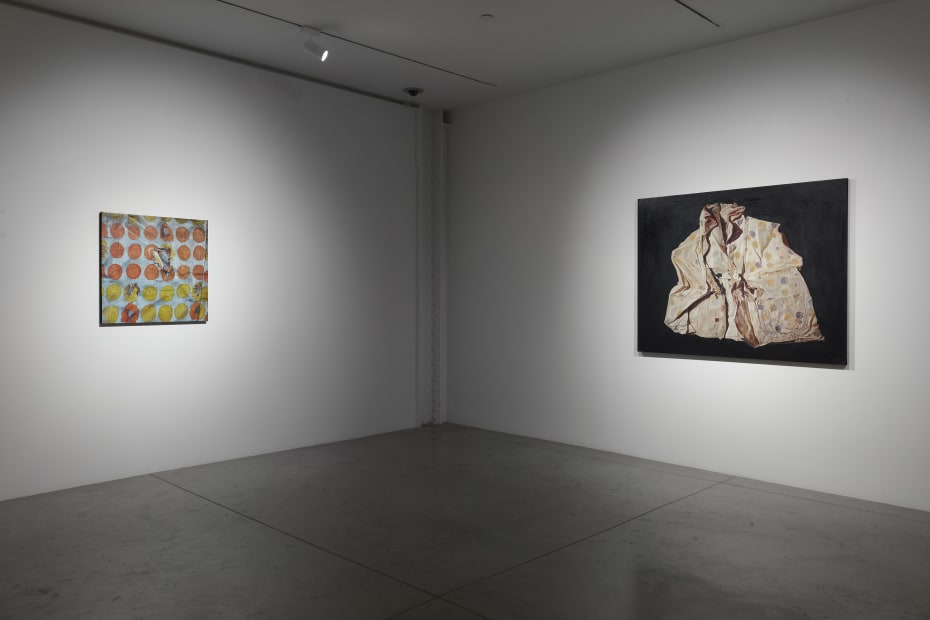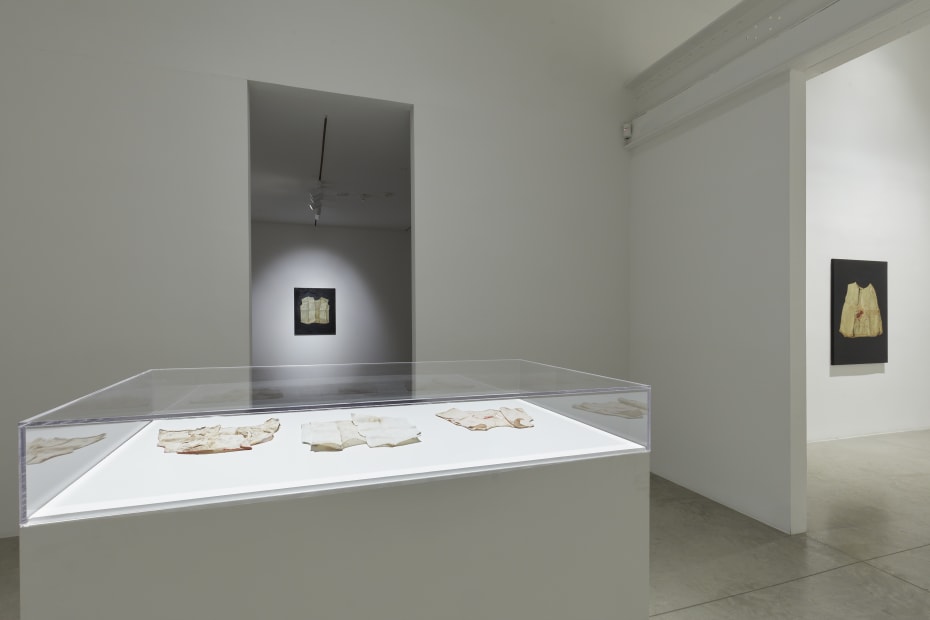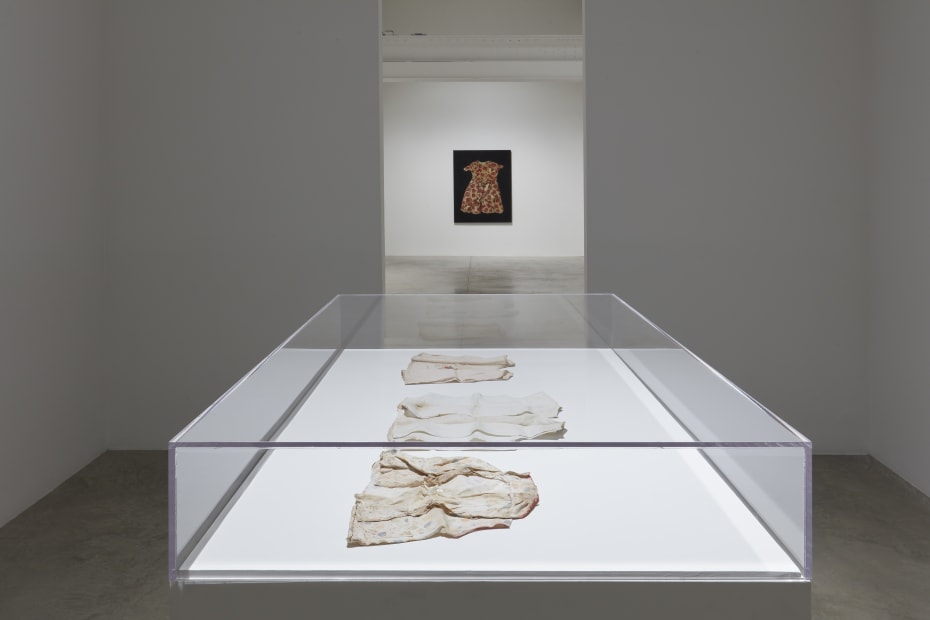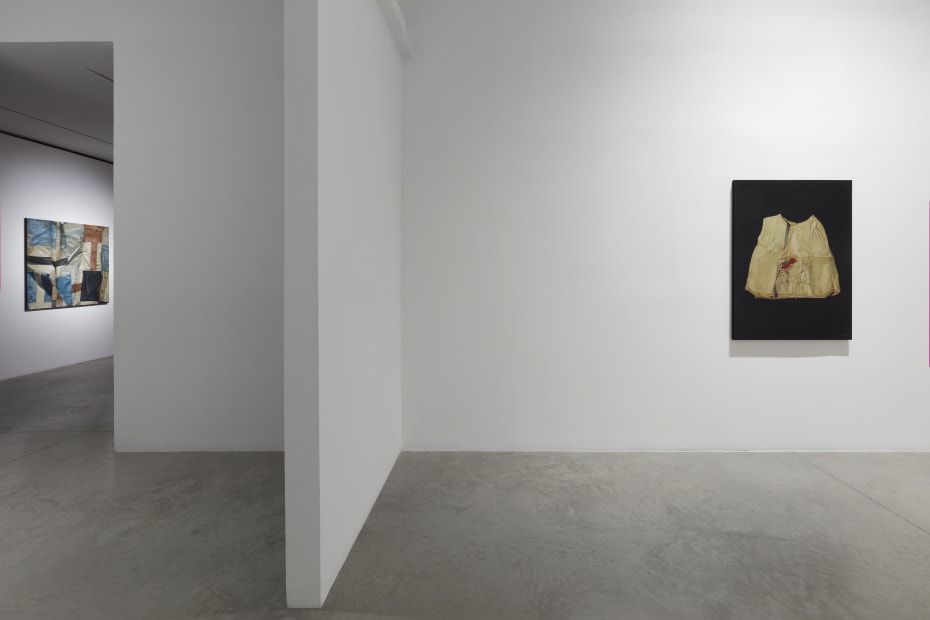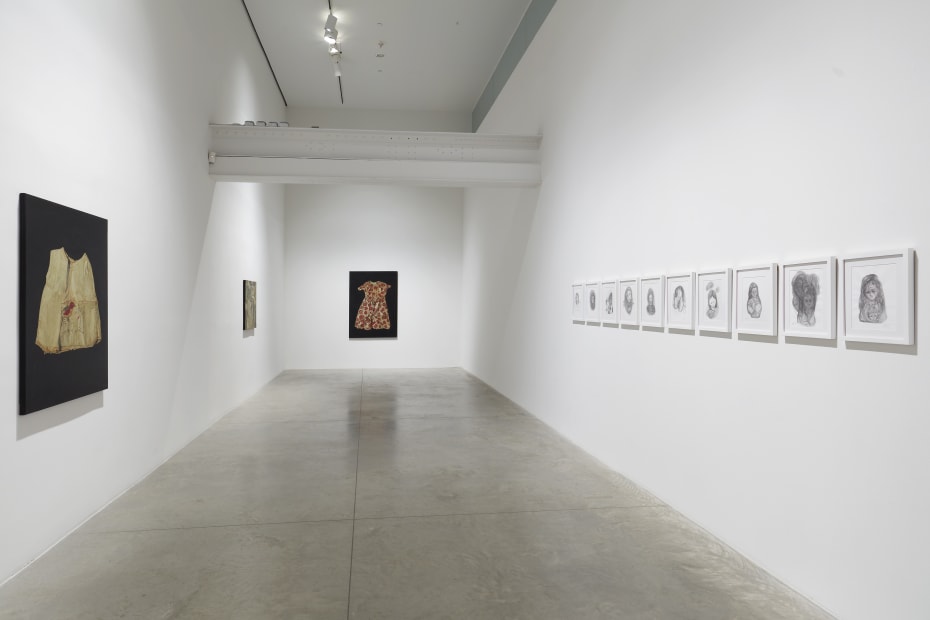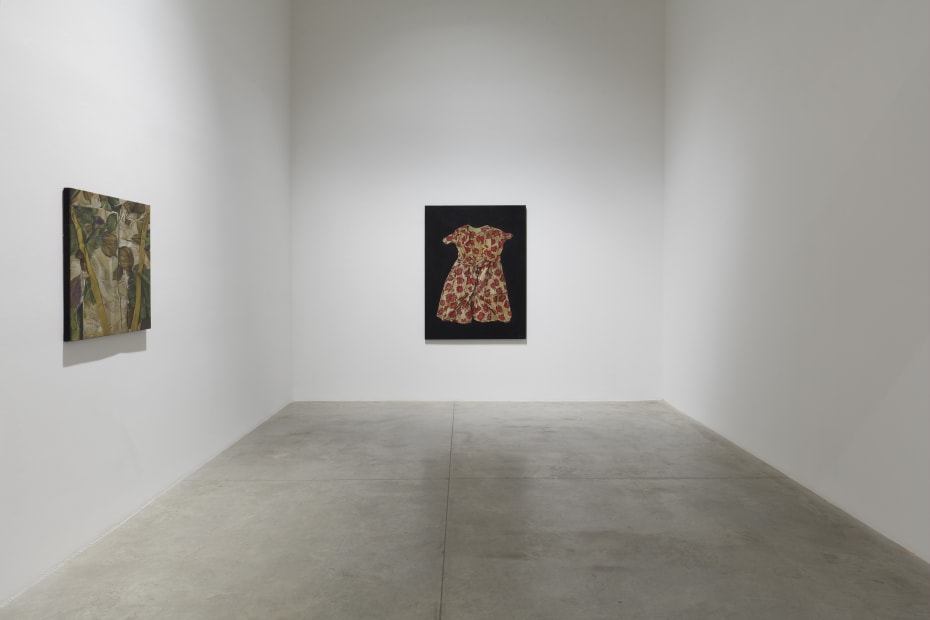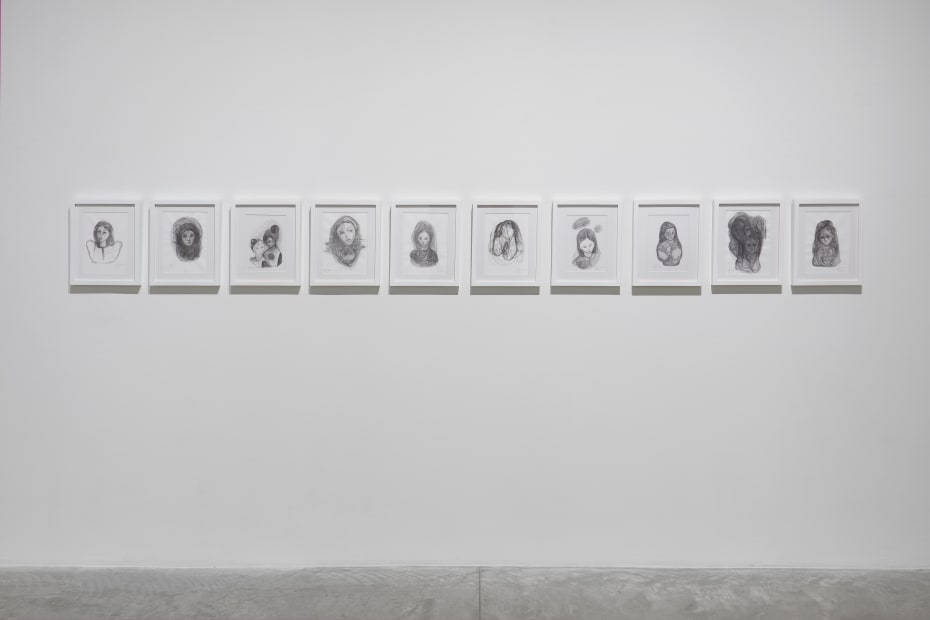Marina Cruz: Belonging and Belongingness
NEW YORK, NY: albertz benda is thrilled to present a solo exhibition of works by Marina Cruz, an artist who lives and works in The Philippines. Cruz will present a new body work at the gallery's Chelsea space.
Cruz is deeply embedded in the artistic milieu of Manila, having trained under the late Professor Leo Abaya, who curated her first ever solo show, Norman Sustiguer, who taught painting techniques at The Philippines College of Fine Arts, and the late Professor Roberto Chabet, who introduced her to conceptual art. She has worked across various media, including painting, photography, embroidery, text, installation, and sculpture. Throughout these processes, she plumbs her family history across generations with an abiding consideration of how objects hold memory and emotions, in particular garments worn by her female relatives.
Cruz takes as subject matter a family archive of clothing that was created by her grandmother, typically comprised of found discarded material such as chicken feed bags. These garments were intended for her daughters, in particular the artist's mother, who was a twin, as her brother lived with an uncle nearby. Cruz now owns over one hundred garments, which create a personal trove of family history. They speak to the culture of her native country as well as to the love and handspun nature of homemade outfits, which we might also understand as creative acts. The dresses and shirts were passed down from one sibling to another, revealing a frugality that defies today's current destructive obsession with fast fashion and the persistent urgency of commercial culture.
Through meticulously detailed paintings in acrylic on canvas, she pays homage to this matrilineal legacy of labor and love. Her work may be seen in the legacy of feminist artists including Mary Kelly, (glove dress artist), and Beverley Semmes, although Cruz's poignant family history belies a different conceptual conceit; while her second-wave predecessors also used garments as signifiers of lived female experience, Cruz's absence of bodies is also a eulogy for lost relatives, including her grandmother, rather than a statement on oppressive patriarchal domination.
The paintings are notable for their impressive technique and skill; Cruz was trained to paint using the grid technique. In this formalist process, the object almost becomes an abstract entity, defined by curves or pleats within a square of the grid rather than the specific object. Cruz, who had focused on abstraction as a student, combines this strict formal approach with a personal, emotional framework. The breathtaking realism of the paintings elevates these modest, at times tattered, frocks and imbues in them a new life separate to their outdated use. They now enter contemporary cultural history, adding to a lineage of female artists interrogating the legacy of past generations through their work today.
